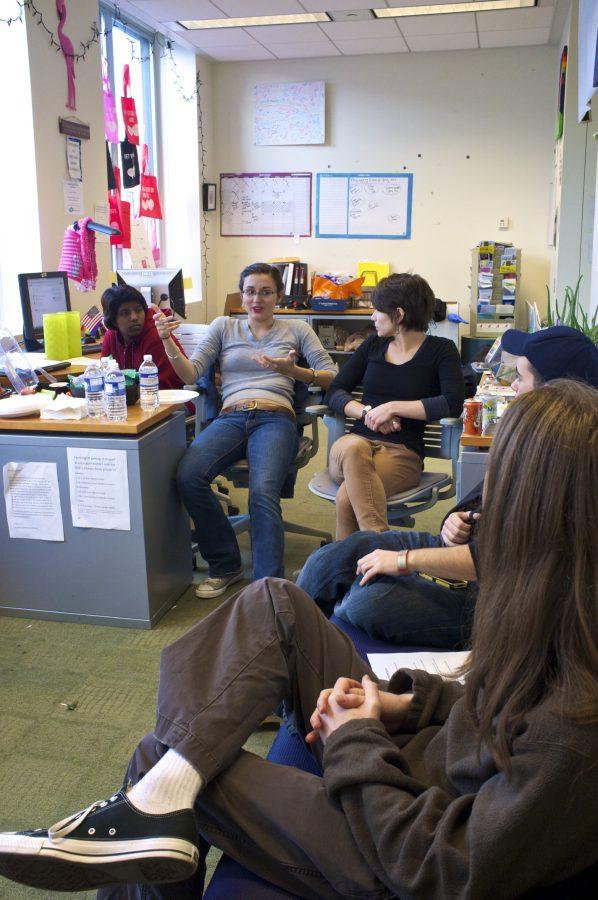UMass Boston’s Queer Student Center (QSC) held a discussion November 20th, a date internationally recognized in the transgender community as Transnational Day of Remembrance, a day memorializing transgender people whose lives have been taken because of hatred and prejudice.
“A transperson is killed once every 72 hours. That blew me away. That means over Thanksgiving as we’re sitting down and eating, that weekend a transperson will be killed, kicking off the list for 2013,” said Stephanie Bonvissuto, the QSC’s student coordinator, to the people attending the discussion. Bonvissuto majors in women’s studies and sociology at UMass.
The list she was referring to is of transgender people who have been murdered in the past 12 months. Names are read out loud by attendees every Nov. 20 at vigils held in cities around the world. This year was the 14th Transnational Day of Remembrance. The city of Boston held the first vigil 14 years ago for for a transgender woman who was found murdered in her home.
This year, there were 265 transgender people on the list, an increase from 213 last year. The longer list means that more transgender people are being murdered, but also that more victims are being recognized as transgender.
“More and more people are being rightfully identified. More and more people are being called transgender instead of just being killed and nothing is said about it,” said Logan Ferraro, a human studies major. Ferraro has attended previous vigils and remembers how, instead of names, “identified person,” or “unidentified person in women clothes,” would be read. This year at the vigil, Ferraro read the names of four people, two of whom were unidentified.
Transgender murders are horrifically violent; often the person is mutilated to the point of being unrecognizable.
“The attacks are brutal. Reading from the list, one person was burned to death this year. People are stabbed multiple times, multiple gunshot wounds, stoned to death,” said Bonvissuto. Others spoke about how bodies are found with genitals cut off or decapitated. Two years ago, an 8-month-old baby was shaken to death by his father because he thought his baby looked more like a girl than a boy. Often the killers are people close to the victim.
Most murders are outside the United States, but when a murder does happen in the U.S. it of course is personally felt in the tightly knit transgender community.
“I remember how I used to feel so detached, and how it was different for me, until I started recognizing names on the list,” spoke Ferraro.
Ferraro is a transgender man and his biggest fear is being a name on that list.
“I made it another year without being killed. Not being a statistic is such an achievement in our community,” said Ferraro.
Statistics were constantly repeated during the conversation. One in 12 transwomen will be killed. One in eight transwomen of color will be killed. The greater violence that women of color face was a subject of intense discussion. The conversation only ended when students in the QSC found they had to go to class, and many left reluctantly.
“What were they like? What was the music that they liked? What did they dance to? What did they watch on TV? What did they like to read? What was their favorite dream? What was the type of person they really wanted to go out on a date with? What makes them laugh? What’s their favorite pet? We’re never going to know now. Their stories have been totally silenced,” said Bonvissuto.





















































